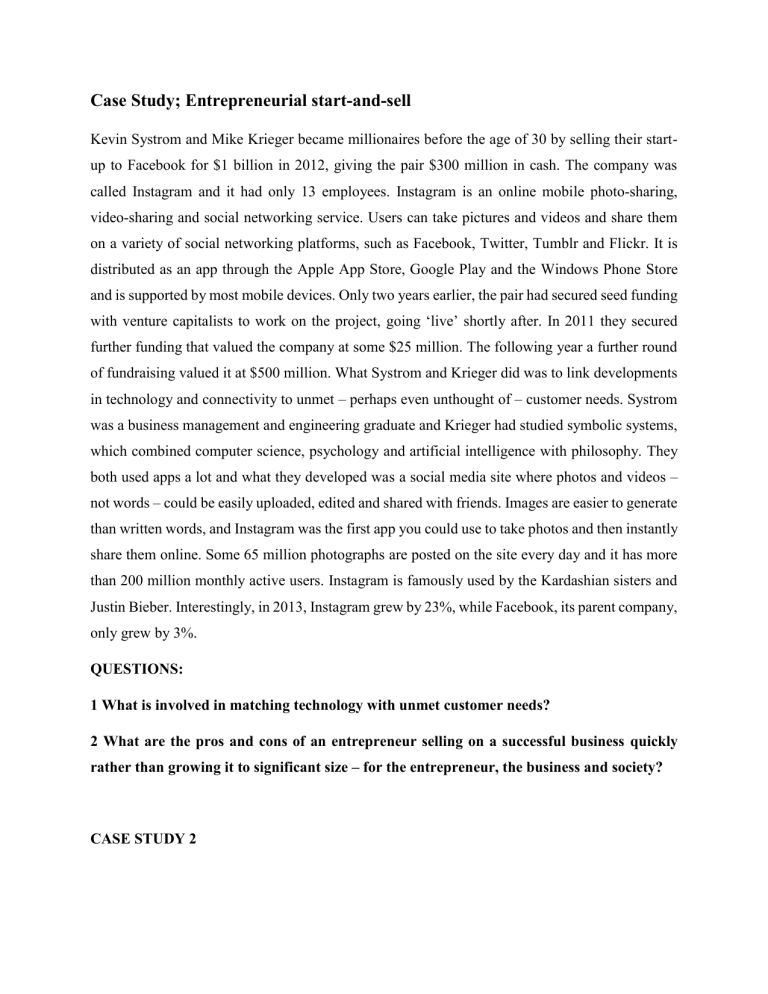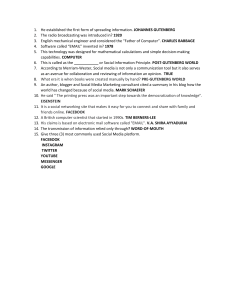
Case Study; Entrepreneurial start-and-sell Kevin Systrom and Mike Krieger became millionaires before the age of 30 by selling their startup to Facebook for $1 billion in 2012, giving the pair $300 million in cash. The company was called Instagram and it had only 13 employees. Instagram is an online mobile photo-sharing, video-sharing and social networking service. Users can take pictures and videos and share them on a variety of social networking platforms, such as Facebook, Twitter, Tumblr and Flickr. It is distributed as an app through the Apple App Store, Google Play and the Windows Phone Store and is supported by most mobile devices. Only two years earlier, the pair had secured seed funding with venture capitalists to work on the project, going ‘live’ shortly after. In 2011 they secured further funding that valued the company at some $25 million. The following year a further round of fundraising valued it at $500 million. What Systrom and Krieger did was to link developments in technology and connectivity to unmet – perhaps even unthought of – customer needs. Systrom was a business management and engineering graduate and Krieger had studied symbolic systems, which combined computer science, psychology and artificial intelligence with philosophy. They both used apps a lot and what they developed was a social media site where photos and videos – not words – could be easily uploaded, edited and shared with friends. Images are easier to generate than written words, and Instagram was the first app you could use to take photos and then instantly share them online. Some 65 million photographs are posted on the site every day and it has more than 200 million monthly active users. Instagram is famously used by the Kardashian sisters and Justin Bieber. Interestingly, in 2013, Instagram grew by 23%, while Facebook, its parent company, only grew by 3%. QUESTIONS: 1 What is involved in matching technology with unmet customer needs? 2 What are the pros and cons of an entrepreneur selling on a successful business quickly rather than growing it to significant size – for the entrepreneur, the business and society? CASE STUDY 2 Steve Jobs and his friend Steve Wozniak were self-taught engineers who created one of the most popular, revolutionary, technology brand, “Apple”. Steve Jobs was not the first person to have an idea to create a user-friendly computer, and he was not the first person to come up with an idea about music players or smartphones, but he was the first person to implement them. He covered potential ideas and then implemented them in ways that no one had ever dreamed of before. Apple products, whether they be a computer, laptop, iPod, iPhone, iTunes, or otherwise, are featured everywhere. Not only Apple products are of high-quality technological items, but the company also has superior branding and a strong company image making them, one of the most popular and easily recognizable brands in the world. A. From this example, identify and explain any four traits/characteristics of Steve Jobs that helped him to be successful in his business. B. What are the factors/reasons that support the success of Apple Company?


